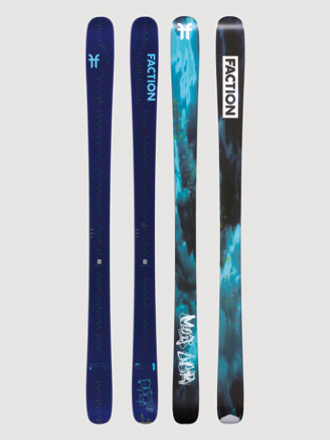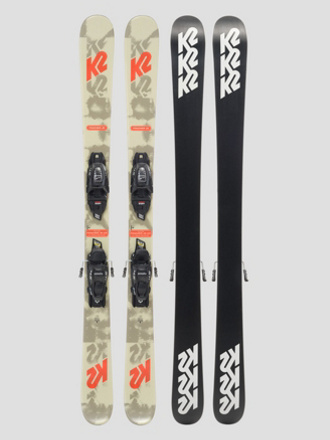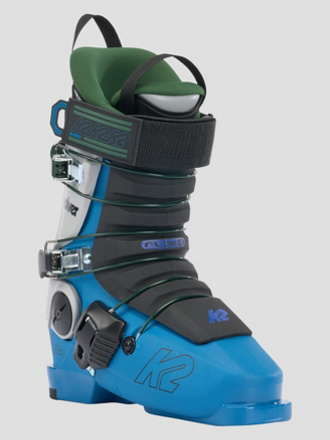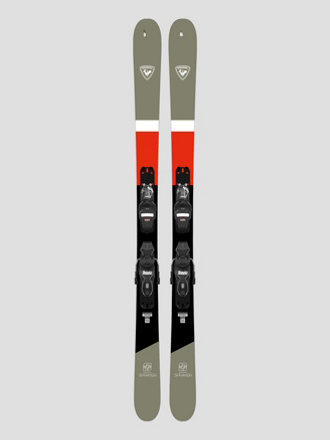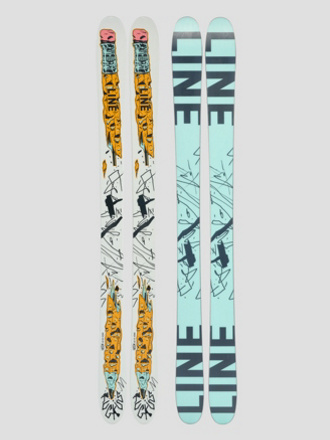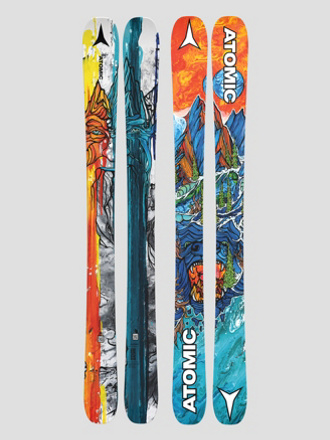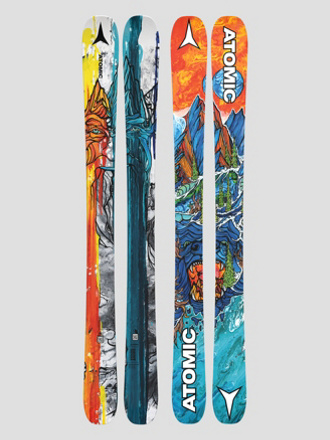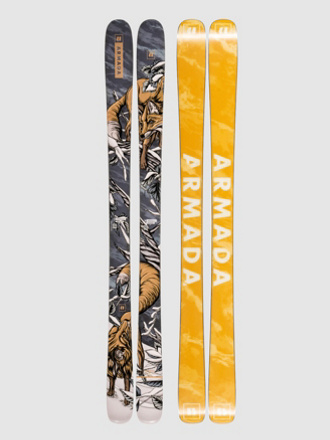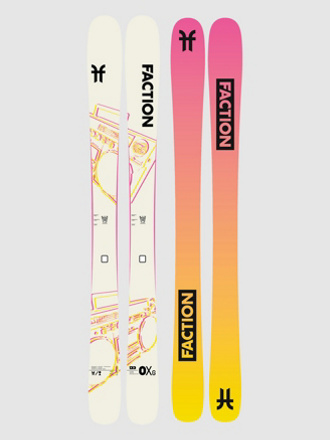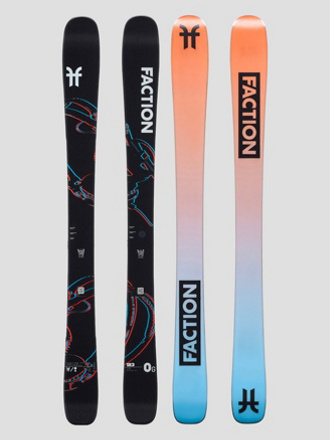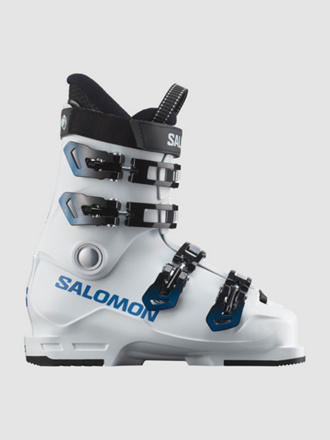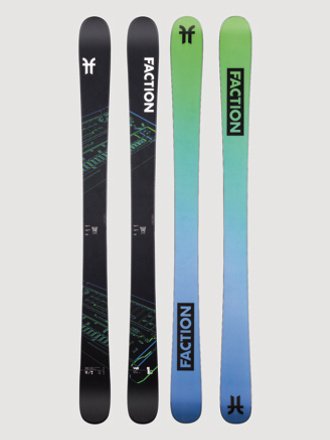
Freeski Equipment
(16)Freeski - Planks for the Park
The conventional carving ski has about as much in common with a freeski as Shaun White does with Christiano Ronaldo. Both are great at what they do, but they don't really want much to do with each other. Whether you call it freeriding, freestyle, slopestyle or trickskiing, the principle is always the same - put two skis on your feet and go and tear up the kickers and rails in the park. Hell, they don't even have to be in the park! A local handrail or fallen tree in the backcountry can just as easily become an improvised obstacle. Grab your new pair of skis at Blue Tomato and get creative!
Freeskis - Your Ultimate Park Weapon
"But what is a park for skiing?" we hear you ask. The snow park as it's known colloquially (at least to those with two skis underfoot), is fundamentally different to the village park around the corner from you. Snow parks are chock full of man-made kickers, obstacles like boxes and rails and other features that you'll soon be conquering with ease. These days "new-school" skiing is an established sport in its own right. Having started at the X games, these young men and women with bent skis on their feet now even take part in the Olympic Games. Legends like Tom Wallisch, Tanner Hall and Jon Olsson can now be seen hucking heart-stopping tricks from the comfort of your own living room. If a snowboard isn't your weapon of choice and you prefer the freedom of a pair of skis, we have the perfect selection for you at Blue Tomato . If you fancy yourself as a park rider, you will absolutely need a pair of twin-tip skis. They are completely symmetrical and are bent up at both the nose and tail making backwards landings and switch riding a piece of cake, especially when combined with centre mounted bindings . Younger brands like Line and Armada , as well as the more classic ski manufacturers Atomic and Völkl , are at the forefront of technology when it comes to this new form of ski.
Nature is Your Friend - Talking Tree Stumps and Handrails
Not lucky enough to live in a ski resort? Who cares! Just look around you - your surroundings are your snow park! If you've been eyeing up that 200m slope on your doorstep, a directional twin-tip ski could be ideal for you. With a slightly wider nose, these skis will give you enough float in light powder , whilst letting you slide any tree trunk or stump with ease and making the biggest spins possible off even the smallest kickers. Just use your imagination! There's no better way to prepare for the snow park vacation of your dreams - it will take your riding to a whole new level!As the name would suggest, urban skiing is all about making your hometown your playground. No handrail or gap will be safe from you and your skis. This kind of skiing is heavily reminiscent of inline skating and street skateboarding . A true twin-tip and a shorter ski are both ideal for this kind of skiing as well.
Construction, Sizing and Sidecuts in Detail
Skiing has come a long way since the days of strapping two wooden planks to your shoes. Now you've got sandwich, torsion-box and monocoque constructions . Sound like Greek to you? Not anymore! Sandwich construction skis both sound delicious and are generally preferred by skiers. The layers of the ski are layered and glued flat. Manufacturers use the most durable materials they can lay their hands on and, with this method, can perfectly tune the flex of the ski. Torsion-box construction is similar to sandwich construction but involves wrapping an inner core of wood or another material in layers of fibreglass for greater torsional stiffness. This is, however a much more labour-intensive process. Monocoque skis are no worse than other construction types, but do tend to be rarer because of their more complex manufacturing process. The topsheet and sidewalls are combined in one piece making the ski lighter and giving it more torsional strength. Physics plays a key role in the sizing and sidecut of a ski: The wider the ski, the floatier it will be in powder . With a 90 to 100 mm wide ski you won't be needing a periscope any time soon. A central width of 85 to 90 mm should do you nicely for the kicker lines as this kind of size is pretty optimal for stability through harder landings. If you're primarily going to be riding boxes and rails, a narrow ski would be better as it will afford you that extra bit of agility.
Shapes for Every Need - Camber, Rocker and Hybrid
The positive camber shape is the classic ski shape. It offers perfect edge hold and responsiveness on hard, icy pistes and makes high-speed wobbles a thing of the past. The rocker shape is the first thing you'll notice about a freeski. A soft nose and tail and banana-like curve give the ski maximum flexibility. The shorter contact surface of the ski makes it easier to spin and much more forgiving than its camber counterpart. You'll also notice a bit of extra float in powder - a definite plus point. The only downfall is that this shape struggles with high speeds and icy pistes. Of course manufacturers have found a middle ground between these two extremes: The Hybrid Rocker . Beneath the binding you get all the benefits of a camber ski, whilst the rest of the ski gives you the forgiveness and spinning performance of a rocker ski.
Skis, Bindings, Boots and Poles - an Inseparable Team
Without the right bindings you won't get the best out of your skis! Once again, freeskiing differs from its alpine colleagues: freeski bindings are usually mounted central or set back slightly for a little more float. DIN and Z values are just as important as ever here. To avoid injuries, make sure you use the right value to match your body size. This can be calculated using your weight, height, ski boot sole length and ability level.
Another important part of your setup is the ski boot . Skiers, of course, need a hard boot, but these too can be surprisingly flexible. The more buckles you have, the more room you have for adjustment, giving you the chance to directly influence how comfy they are. For jibbers, a softer boot is going to be more appropriate. For longer, higher jumps, you'll want the support of a harder ski boot, like the ones available from Dalbello or Full Tilt . And last but not least, ski poles ! A general rule of thumb: multiply your height by 0. 7 to get your perfect pole length. If you're riding piste or backcountry you can always go a little bit longer, but if you're riding park or pipe, it's better to go the other way. You'll find everything you need to create your perfect freeski setup in our huge selection of hard goods at Blue Tomato . But don't forget, freeskiing is also about style - the right snowwear is almost as important as sticking that 540, right guys? Right?

